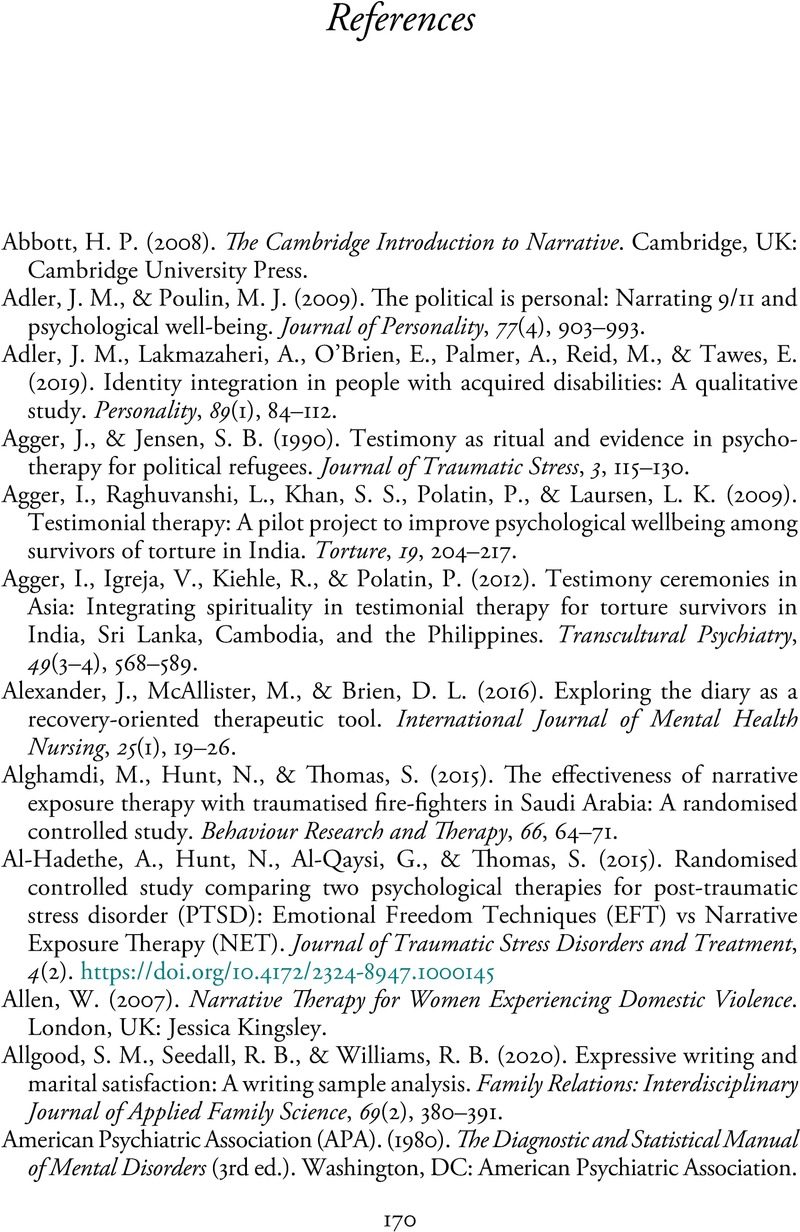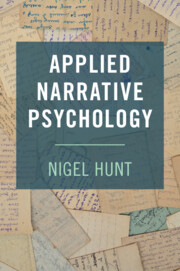Book contents
- Applied Narrative Psychology
- Applied Narrative Psychology
- Copyright page
- Contents
- Preface
- Chapter 1 Introduction
- Chapter 2 What Is Narrative?
- Chapter 3 Narratives in Psychology
- Chapter 4 Master Narratives
- Chapter 5 Narrative Methods
- Chapter 6 Life Interviews
- Chapter 7 Narrative Writing
- Chapter 8 Narrative Therapy
- Chapter 9 Narrative Exposure Therapy
- Chapter 10 Narrative Medicine
- Chapter 11 Narrative Health Psychology
- Chapter 12 Narrative Work Psychology
- Chapter 13 Narrative Coaching
- Chapter 14 Conclusion
- References
- Index
- References
References
Published online by Cambridge University Press: 02 November 2023
- Applied Narrative Psychology
- Applied Narrative Psychology
- Copyright page
- Contents
- Preface
- Chapter 1 Introduction
- Chapter 2 What Is Narrative?
- Chapter 3 Narratives in Psychology
- Chapter 4 Master Narratives
- Chapter 5 Narrative Methods
- Chapter 6 Life Interviews
- Chapter 7 Narrative Writing
- Chapter 8 Narrative Therapy
- Chapter 9 Narrative Exposure Therapy
- Chapter 10 Narrative Medicine
- Chapter 11 Narrative Health Psychology
- Chapter 12 Narrative Work Psychology
- Chapter 13 Narrative Coaching
- Chapter 14 Conclusion
- References
- Index
- References
Summary

- Type
- Chapter
- Information
- Applied Narrative Psychology , pp. 170 - 186Publisher: Cambridge University PressPrint publication year: 2023



